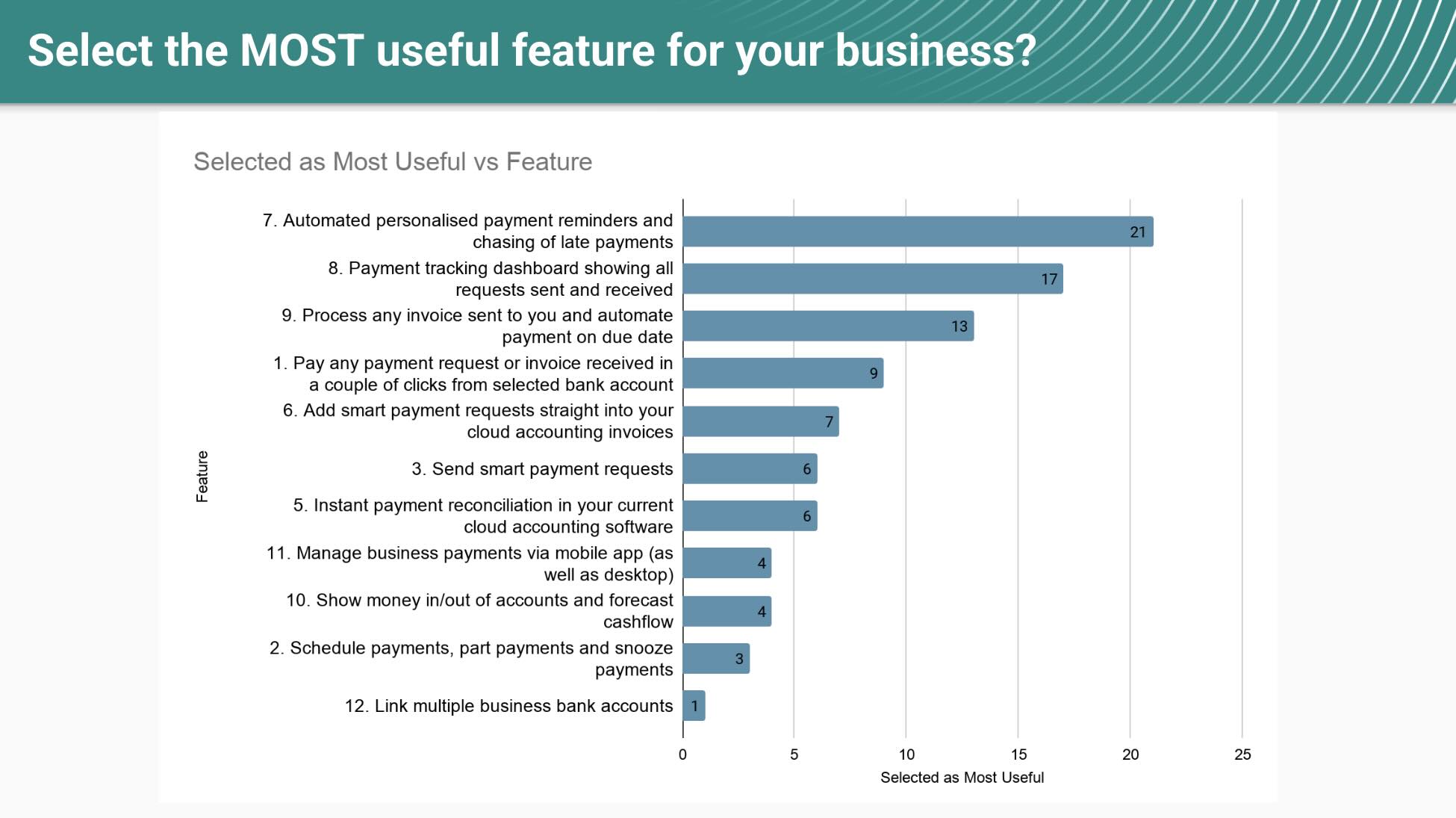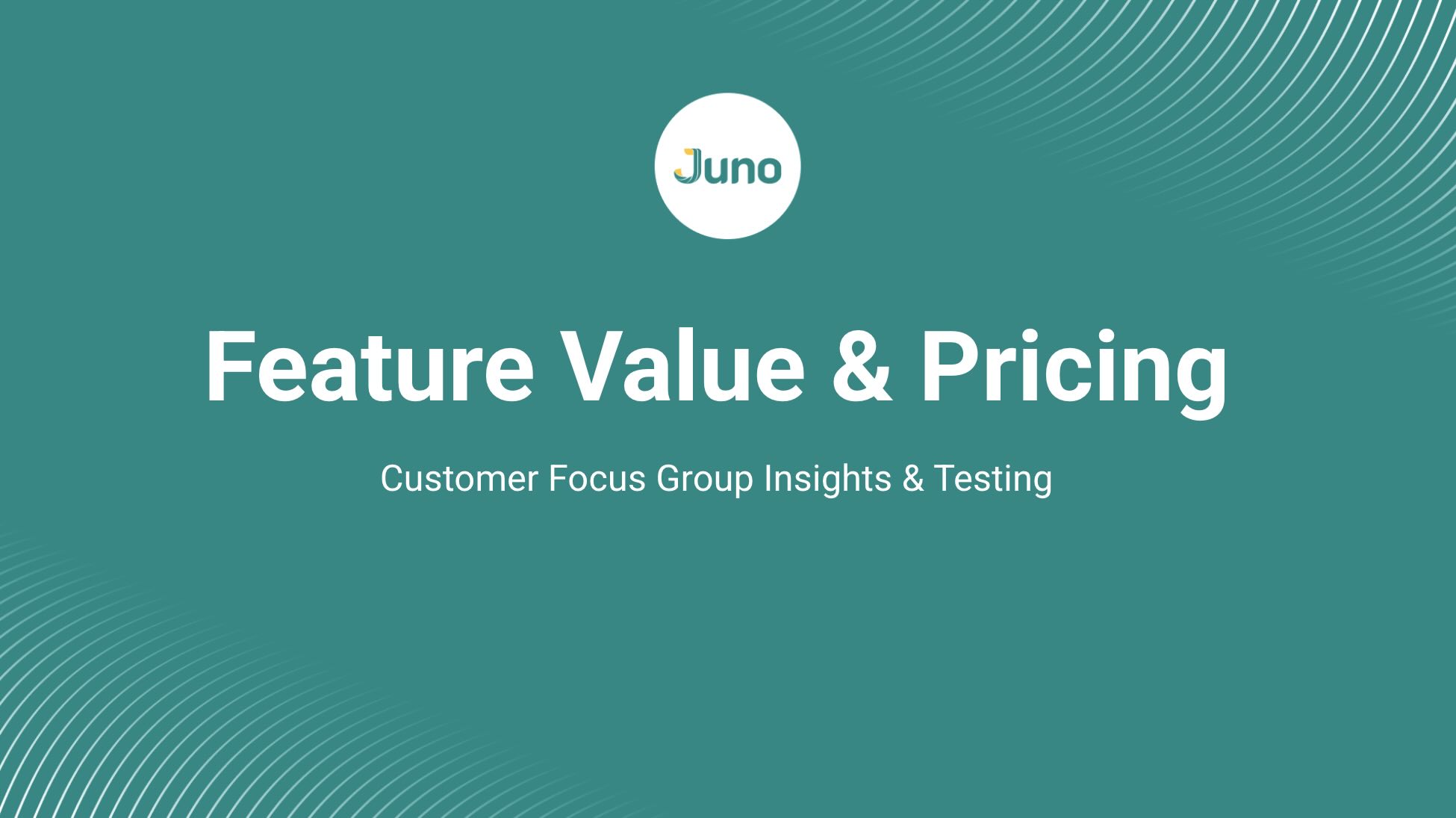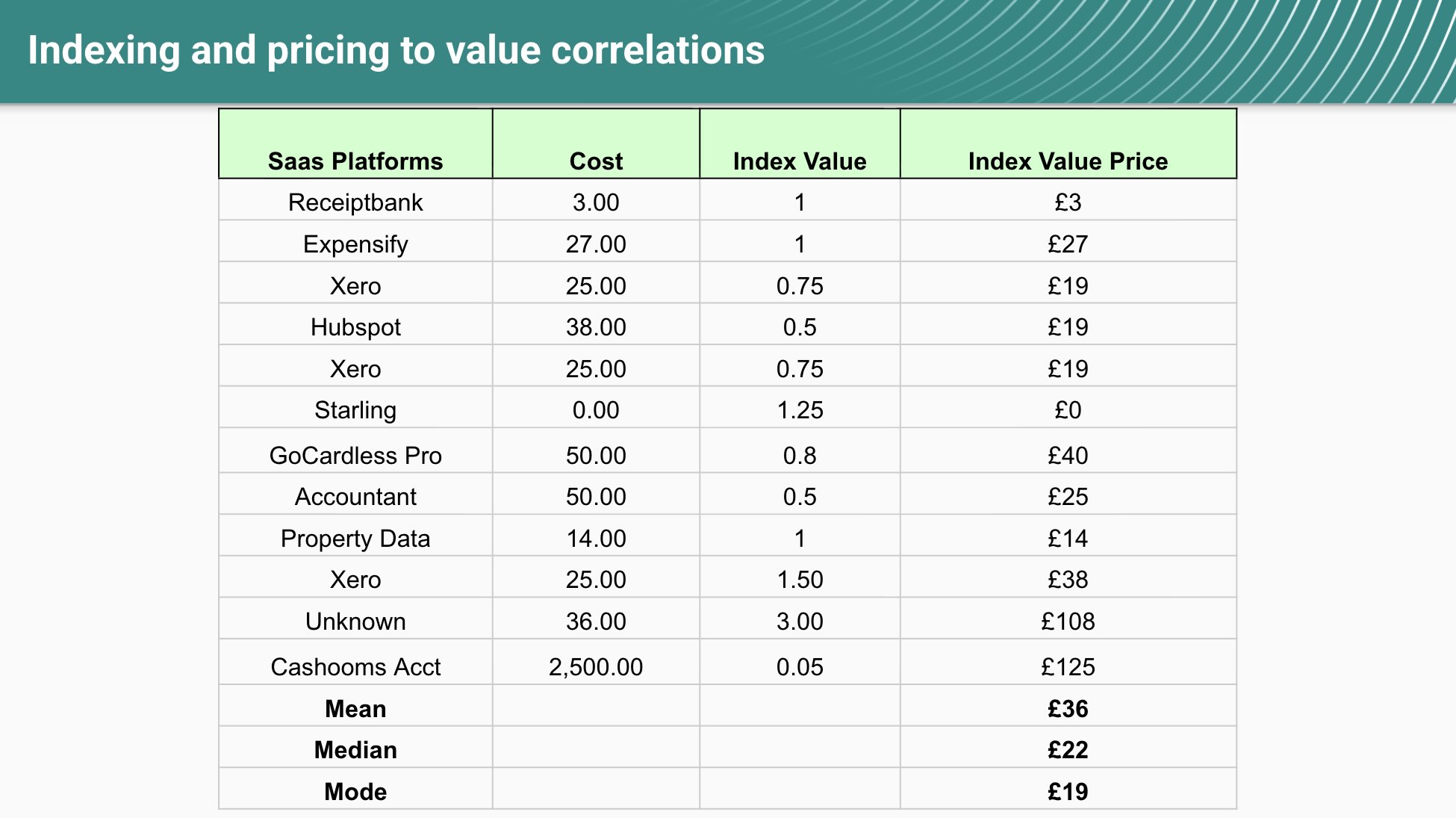
Feature Value & Pricing Strategy
Pricing, Revenue & Product Roadmap
Increase In Revenue Per User
Increase in revenue per customer within 6 months
SME Customers Onboarded
Successfully onboarded paid SME customers using the validated pricing model
Tiered Pricing Structure
Implemented Free, Plus (£19), and Premium (£39) tiers based on customer value insights
"We systematically demystified what customers were actually willing to pay for, transforming our entire product roadmap and revenue model in the process.
"
The Challenge
Navigating the complexity of feature prioritisation and pricing in the competitive open banking landscape
Juno faced the classic startup dilemma of determining which features to develop, how to price them, and whether to pursue a free, freemium or premium model. With limited resources and an increasingly crowded market of open banking payment solutions, we needed data-driven insights to guide our product roadmap and ensure sustainable revenue growth whilst competing against established players in the bank to bank payment space.
Feature Prioritisation Paralysis
Without clear customer willingness-to-pay data, the product team was building features based on assumptions rather than validated customer value propositions
Pricing Model Uncertainty
We lacked a systematic approach to determine optimal price points and feature bundling, risking both customer acquisition and revenue optimisation
Competitive Positioning Gap
Limited understanding of how our value proposition compared to established competitors was hindering our ability to differentiate and capture market share effectively

The Strategy
Applying proven monetisation frameworks to unlock customer value insights
Drawing from my experience optimising pricing structures at Crowdcube and methodologies from "Monetizing Innovation" (highly recommended read), I implemented a systematic approach combining quantitative competitive analysis with qualitative customer research. The strategy focused on understanding true customer willingness-to-pay for specific features whilst testing for specific and known thinking biases, rather than relying on traditional cost-plus pricing models.
Customer-Centric Discovery
Conducted comprehensive focus groups and willingness-to-pay studies to understand what customers truly valued, what they hated, what they couldn't live without what they would pay for
Competitive Value Indexing
Developed a systematic methodology to analyse 12+ competitor platforms using cost-to-value ratios and pricing correlations
Cross-Functional Integration
Ensured seamless collaboration between product, technical, and commercial teams to validate findings and implement changes rapidly
The Execution
From customer insights to revenue transformation through systematic implementation
The execution phase involved coordinating multiple stakeholders including investors, co-founders, product teams, and prospective customers. We implemented a phased approach that allowed for rapid testing and iteration whilst maintaining stakeholder confidence through transparent communication and regular metric reporting. The process required careful balance between thorough analysis and speed to market.
Customer Discovery & Focus Groups
We began by conducting in-depth customer focus groups with existing and potential users to understand their pain points, feature preferences, and willingness-to-pay thresholds using mock-ups and prototypes. This involved recruiting participants across different business sizes and industries to ensure comprehensive insights. We used structured interview techniques from the "Monetizing Innovation" framework to uncover both explicit and implicit value drivers and get into the minds of our future users.
The focus groups revealed critical insights about which features customers considered "must-haves" versus "nice-to-haves," and more importantly, which features they would actively pay premium prices for. We discovered that personalised automated payment chasing and real-time payment tracking were significantly more valuable to customers than initially anticipated, whilst some features we considered essential were viewed as basic hygiene factors.
"The focus groups completely shifted our perspective and disproved some of our assumptions. Customers didn't want more features, they wanted the right features that solved their most pressing cash flow challenges"

Competitive Analysis & Value Indexing
I developed a comprehensive competitive analysis framework that went beyond simple price comparisons to include value-based indexing. This involved analysing 12+ competitor platforms including AllPay, GoCardless, Swoop and others, calculating cost-to-value ratios and identifying pricing patterns. We examined how competitors bundled features and positioned their premium offerings.
The analysis revealed that £19 was a recurring optimal price point, rather than cost per payment, across multiple successful platforms, with GoCardless appearing most frequently in customer price references. We discovered significant opportunities where competitors were either overpricing low-value features or underpricing high-value capabilities, and realised that users hated the price-per-payment model, creating clear positioning opportunities for Juno.
"The data showed us exactly where the market gaps were - not just in features, but in how those features were priced and bundled."

Willingness-to-Pay Analysis & Feature Prioritisation
Using structured willingness-to-pay interviews, we spoke to 100+ customers across different price points to determine acceptable, expensive, and prohibitively expensive thresholds for various features. This involved presenting different feature bundles and pricing scenarios to understand price sensitivity and feature value perceptions. Critically, it also allowed us to understand more deeply where the median value features sat not just the most and least valuable. The data revealed clear patterns about which features justified premium pricing.
We identified three "leader features" including automated personalised payment reminders and chasing of late payments, payment tracking dashboard showing all requests sent and received and the ability to process any invoice sent to you and automate payment on due date. It became evident that customers were willing to pay significantly more for these features. Conversely, we also found our 'filler' features as well the those to 'kill', realising that basic payment tracking should remain free as a customer acquisition tool, whilst cloud accounting integration and advanced cash flow forecasting would command premium pricing.
"Understanding true willingness-to-pay transformed our product roadmap and proved many of our initial assumptions incorrect. We finally knew which features would drive revenue and which were simply table stakes."

Implementation & Stakeholder Alignment
The final phase involved presenting findings to investors and co-founders, including detailed recommendations for feature prioritisation, pricing tiers, and go-to-market strategy. This required translating complex customer insights into clear business recommendations with projected revenue impacts. We developed comprehensive documentation and implementation timelines to ensure smooth execution.
We implemented the new pricing structure gradually, starting with new customer acquisitions before migrating existing users. This involved close collaboration with the product and technical teams to ensure features were delivered according to the validated priority sequence. Regular monitoring and customer feedback loops were established to track performance against projections.
"Getting stakeholder buy-in required more than just data - we had to clearly demonstrate how customer insights would translate into sustainable revenue growth."

The Results
Measurable impact on revenue growth and customer satisfaction
The feature value and pricing strategy delivered significant improvements across a number of metrics within six months of implementation. Critically, it provided customer first insights we'd been missing even though the collecting of these was long and arduous. The data-driven approach not only optimised our revenue model but also improved customer satisfaction by aligning our offering more closely with actual customer needs and willingness-to-pay thresholds. The rest was history.
Increase In Revenue Per Customer
Increase in revenue per customer within 6 months
SME Customers Onboarded
Successfully onboarded paid SME customers using the validated pricing model
Tiered Pricing Structure
Implemented Free, Plus (£19), and Premium (£39) tiers based on customer value insights
Competitors Analysed
Comprehensive competitor analysis landscape mapping that informed positioning strategy
Investment Secured
Investment secured from the likes of Lakestar, UBS and Credit Suisse
Validated Price Point
Confirmed optimal pricing tier that balanced customer willingness-to-pay with revenue maximisation
Learnings & Reflections
This section reflects on key insights, lessons learned, and recommendations for future initiatives.
Customer Assumptions vs Reality
Our internal assumptions about feature value were frequently wrong; systematic customer research revealed that features we considered premium were often viewed as basic hygiene factors, whilst simpler features like automated payment reminders had much higher perceived value than anticipated.
Stakeholder Communication Complexity
Translating customer insights into actionable business decisions required more stakeholder education than expected; investors and technical teams needed different data presentations and required ongoing alignment throughout the implementation process to maintain momentum.
Implementation Timeline Challenges
Rolling out pricing changes whilst maintaining customer satisfaction proved more complex than anticipated; we learned that gradual implementation with extensive customer communication was essential, and some customers initially resisted changes even when they provided better value.